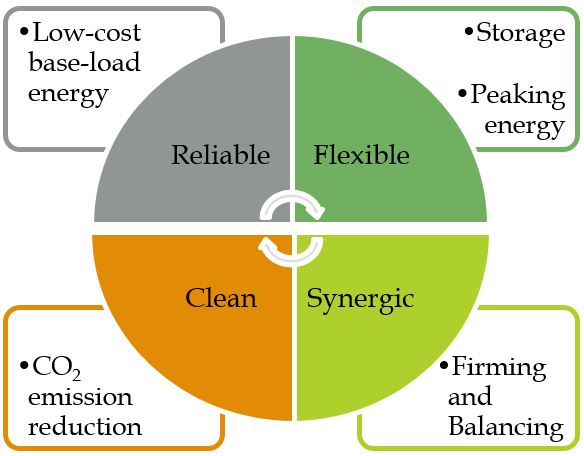ECA INSIGHT >>
Hydropower: helpful, harmful, hopeful?
Sep, 2018
Hydropower is the largest source of renewable energy in the world, accounting for around 71% of all renewable electricity [1]. It is expected to play a critical role in decarbonising the power system and improving its flexibility, particularly in emerging markets where hydropower also provides energy security, water services and enhances regional cooperation.
Based on previous work carried out by ECA, this Insight looks at the benefits and losses resulting from hydropower and explores the opportunities that are likely to arise as the sector continues its upward development trend.
Helpful?
There has been a considerable rise in hydropower development in recent years, mainly driven by the increased demand for electricity, generation flexibility, energy storage and climate change mitigation solutions.
The benefits traditionally associated with hydropower include:
- Low-cost base-load power: due to the constant flow of water through generators, hydropower adds reliability to the energy mix.
- Peaking energy: demand can be flexibly met by releasing water even at short notice.
- Energy storage: reservoirs offer the option of storing energy for later use and hydro is estimated to account for 99% of global storage capacity [2].
Hydropower also brings the following advantages over alternative energy sources:
- It’s a clean and renewable power source that doesn’t pollute the air like fossil fuel power plants;
- The flow of water can be controlled through turbines to meet demand;
- It has the potential to enhance water supply, flood and drought control;
- Other benefits include irrigation, navigation (which can also decrease transportation costs) and tourism;
- Reservoirs offer recreational opportunities such as fishing, swimming and boating.
An additional benefit category is “firming and balancing”, reflecting the potential for storage hydro to replace decline in solar energy during evening peak hours (firming) and ensure a rapid response to fluctuating wind and solar output (balancing).
This synergy between hydro storage capability and variable/intermittent solar and wind energy highlights the key role of hydropower for deploying other renewable energy sources.
Figure 1 Types of hydropower benefits

Harmful?
As any infrastructure project, hydropower causes drastic changes to the existing environment and the people living in the development site. The main negative impacts are:
- Resettlement: hydropower projects are often the focus of public debate and national policy due to the possible displacement of communities from project sites;
- Land use: the creation of dams and flooding of land downstream affect the surrounding environment;
- Water quality and flow: hydro plants can negatively impact riverbank habitats by changing the oxygen level in the water;
- Sedimentation: building a dam affects sediment transport in a river, which directly impacts the operating life and output of the hydro plant as well as flood management capacity;
- Fish passage: fish populations can be impacted if they cannot migrate past impoundment dams or to the ocean;
- GHG emissions: methane emissions can result from new reservoirs in heavily vegetated river valleys.
Hopeful?
Despite the benefits that hydropower offers, negative impacts are imposed on the environment and people nearby. However, recent innovations continue to mitigate the negative impact of hydro plants. Examples include fish-friendly turbines, fish lifts and fish ladders, aeration techniques to oxygenate the water. Looking forward, challenges and opportunities are likely to emerge as the sector continues to develop.

[1] https://www.worldenergy.org/wp-content/uploads/2017/03/WEResources_Hydropower_2016.pdf
[2] IEA (2014)
